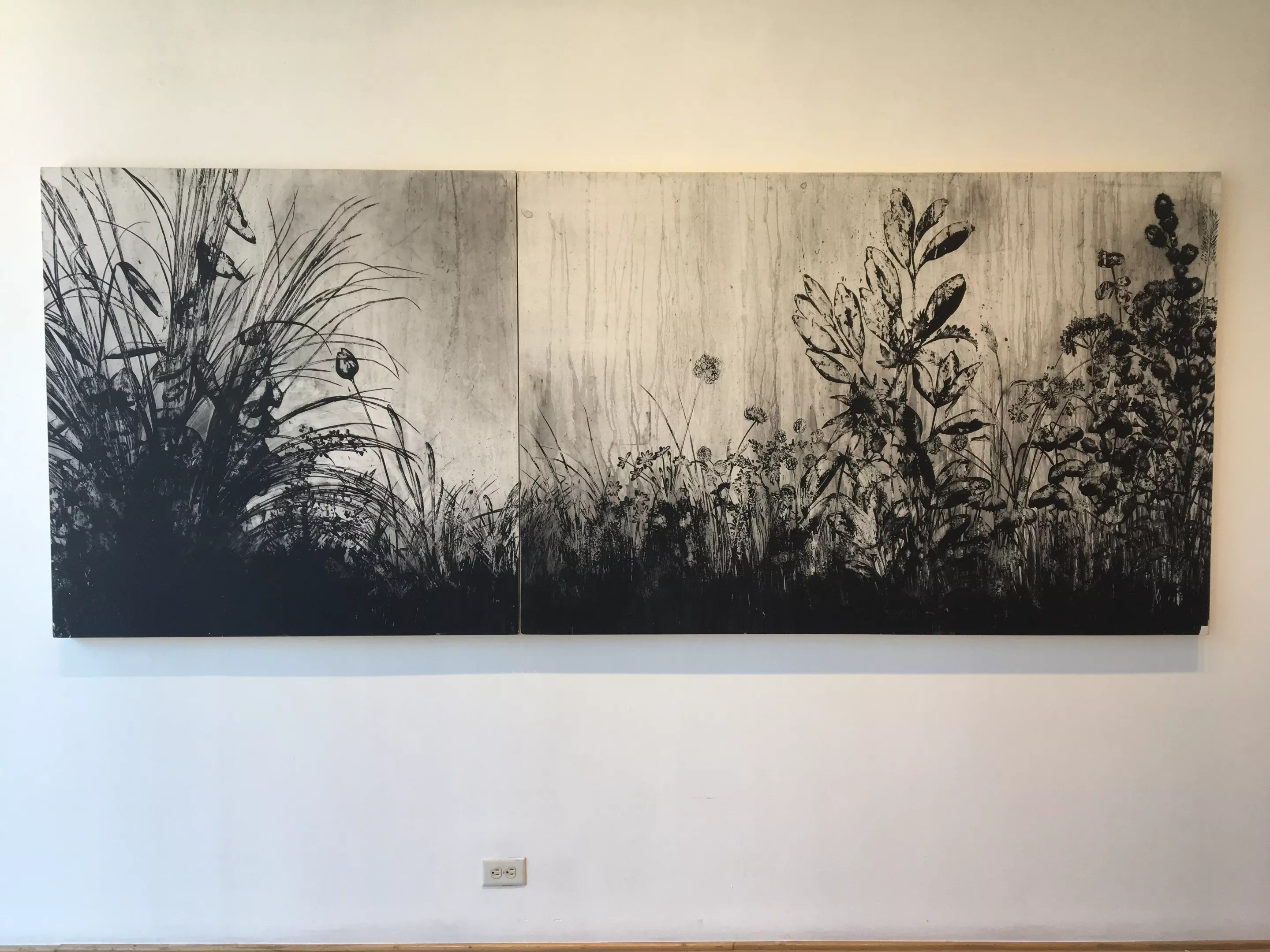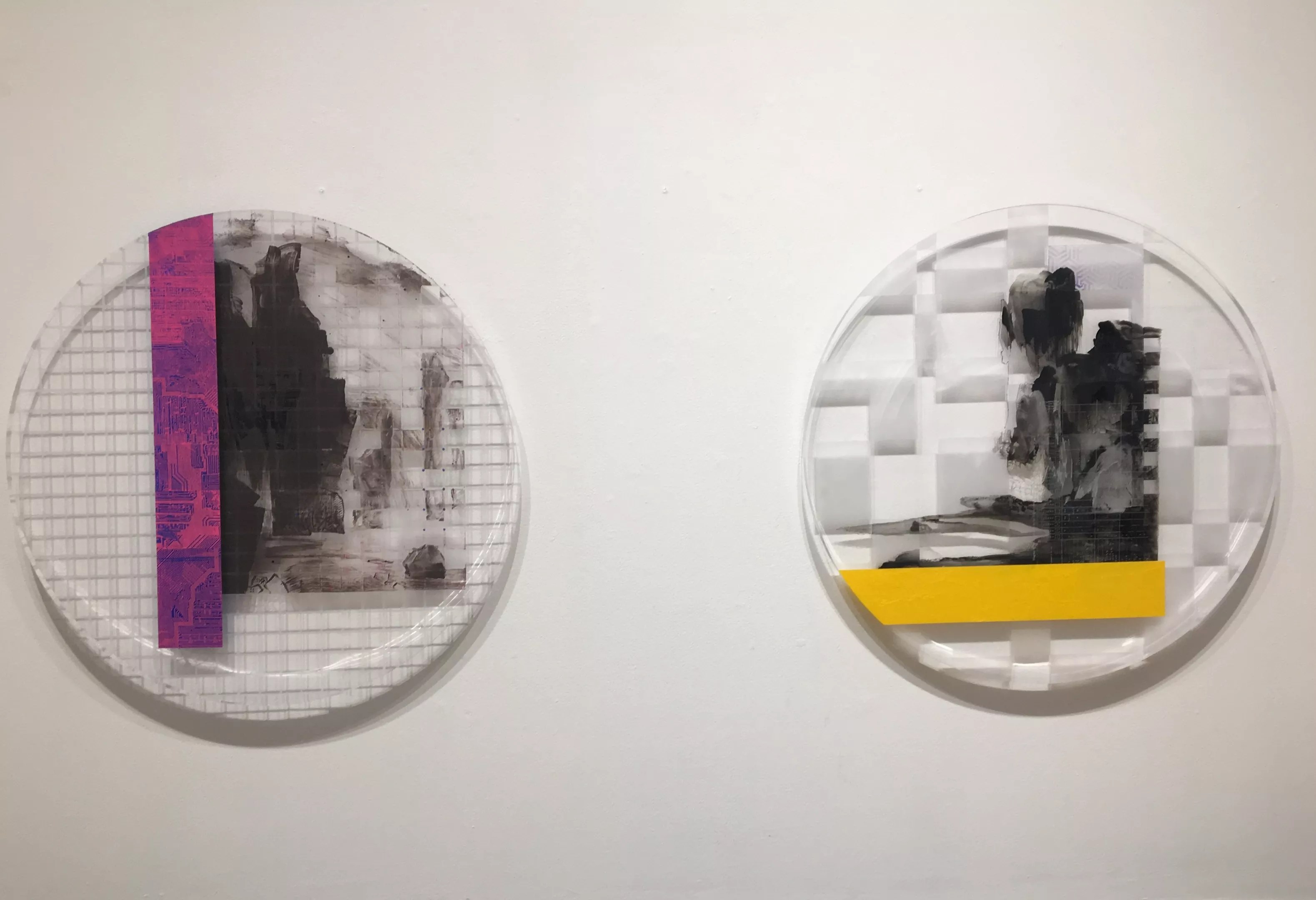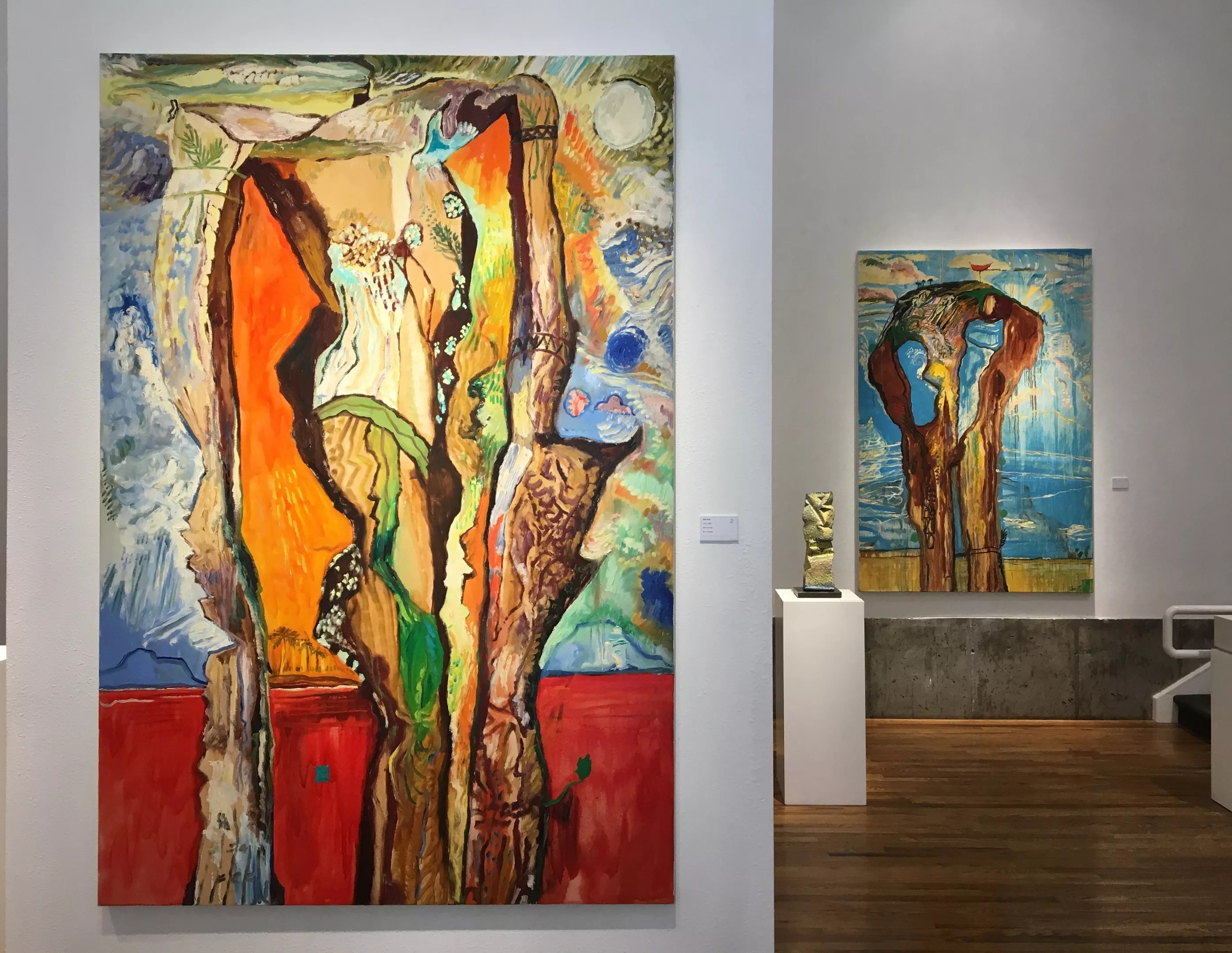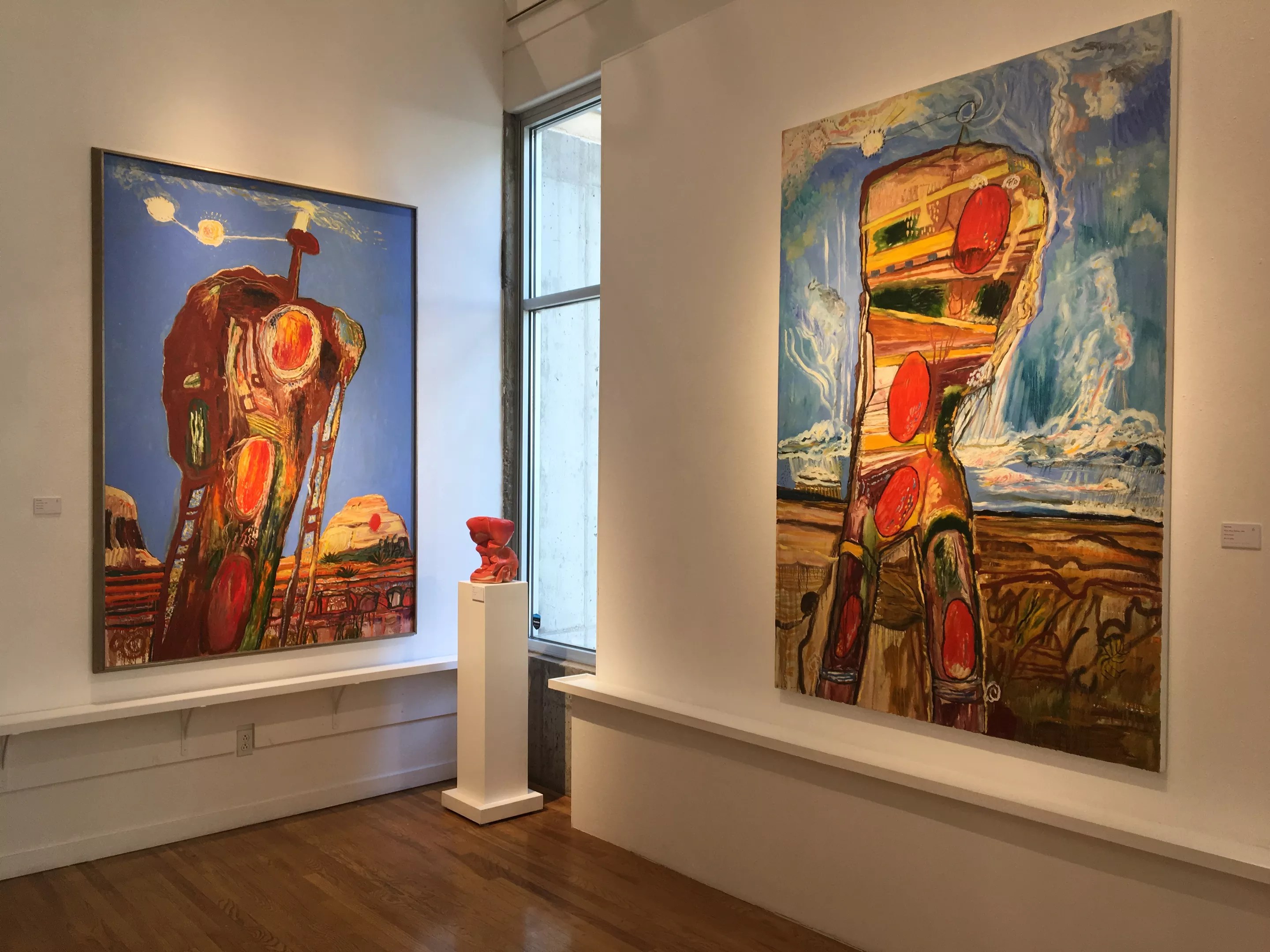
Robert Delaney

Audio By Carbonatix
Since the cave painters, artists have been responding to natural forms. Why has this inspiration been so persistent? One easy explanation is that nature is all around us. But another would be how malleable this approach can be, ranging from photographic representations to completely abstract work, with every incremental in between.
Two solos interpreting nature are now on view at Michael Warren Contemporary. Denver artist Heidi Jung fills the entire set of front spaces with signature compositions in the elegant New Work by Heidi Jung. Born and raised in the foothills, Jung was intrigued early on by the natural environment around her home. At college in Denver, she began her studies as a photographer but switched to a focus on drawing. That was a little over twenty years ago, but interestingly, you can still see the photographic aesthetic in her drawings today. To a limited extent, they’re reminiscent of photographs – in particular pinhole photos, because of their often murky grounds as well as the illusions of transparency in places.
Jung spent the better part of a year creating this new body of work, sparked by a visit to the Royal Botanic Gardens, Kew in London back in January. The drawings are mostly oversized renderings of plants and flowers done in sumi ink and charcoal on sheets of Mylar laid flat on wooden panels, and fixed with an inviable sealant. This approach to presentation is markedly different from the typical way that drawings are shown, which is behind glass and framed; the unorthodox tactic allows Jung’s drawings to function as substitutes for painting, seen unframed and without glass.

“Lookout Mountain” (left) and “Spike,” by Heidi Jung.
Robert Delaney
Jung has also handled the sumi as though she were working with paint instead of ink. Her line is relentlessly fluid and lyrical, and the compositions, though not symmetrical, are perfectly balanced. The standout, if only for size, is the gigantic “Meadow,” which is ten feet across and extends over three panels. Despite the fact that Jung pulls away from tight renderings, instead using smears and rubbings of her marks and inserting layers of renderings over one another to suggest depth, “Meadow” looks like a highly realistic image of grasses and scrub- at least from a distance. Up close, it’s pretty abstract.
The quiet appeal of the Jungs contrasts mightily with the bright palette and somewhat industrial quality of the altered, clear plexiglass panels that have been incised, etched and reverse-painted that make up the engaging Analog – New Work by Andrew Roberts-Gray in the back gallery.

Two of Andrew Roberts-Gray’s “Transfix” rondels.
Robert Delaney
While Andrew Roberts-Gray, who is based in Carbondale, does not offer straightforward depictions, he often refers to the ubiquitous scenery and landscapes from around the world. The finished works in Analog reflect the intersection of a number of his interests, including the computer, the landscape, Hindu god Ganesh and abstraction. Most of the pieces are in rectilinear formats, such as the striking “Wood,” in which Roberts-Gray mashes up an orange bar covered in arching marks set off by the vague suggestion of a landscape, all of it organized within a subtly conveyed geometric ground done with etching. Using the same set of materials and methods, the artist has also created a pair of rondels that share the title “Transfix.” Like other works here, these pieces incorporate sections of computer code used for its compositional value.

Sam Scott’s “Corn” (foreground) and “Place of Shelter,” with a Hank Saxe sculpture.
Robert Delaney
A pair of powerful solos at the William Havu Gallery also take natural shapes as a starting point. Havu usually focuses on art from the region, and the two featured artists are both from New Mexico. On the main floor is Sam Scott: The Wounded Healers, with the walls lined with paintings and works on paper by Sam Scott. The artist, who has lived and worked in Santa Fe since 1969 (aside from the five years he taught at the University of Arizona), is among the most important Southwestern modernists working today, and was part of the generation of abstract artists who came of age in the 1970s. The consistency and high quality of Scott’s overall output has led to his work being exhibited in museums around the world; he was recently named a “state treasure” by New Mexico, and one of his pieces is on view in that state’s capitol building.
Scott’s classic pieces combine an interest in abstract expressionism and the landscape tradition, giving them a kind of post-post-impressionist quality, not unlike the work of Joan Mitchell. Havu includes one of his earlier works – “Messengers,” from 1991 – an all-over abstraction of scribbled lines and sketches of biomorphic shapes that have been done in white and black with touches of yellow, red, blue and green, laid out on a rich ochre ground. It’s stunning.

Sam Scott paintings bracket a Hank Saxe sculpture.
Robert Delaney
The thrust of Scott’s work in The Wounded Healers is very different from his long-recognized signature style, though these paintings also combine abstraction and the landscape. They include vertical spires that might be tree or rock formations, but on close examination are clearly figures set in desert landscapes. These figures don’t really have heads, or at least they’ve been minimized; some have what could be considered thought bubbles floating in the sky above them. When I first saw these strange recent Scotts, they struck me as being related to Clyfford Still’s style of the late 1930s. The thing is, those Still paintings were unknown until the Clyfford Still Museum opened in 2011, and Scott began his series nearly ten years before that. Then again, Scott had studied with Still back in the 1960s, so the abstract expressionist’s example was probably hard-wired as an influence long before his museum opened.
The would-be figures that anchor each of the paintings in this group are awkwardly placed in the compositions and have strange proportions; there’s even a cartoonish attitude in some of them, like the pinhead with thought bubbles in “Canyon Walker.” The strangeness of the imagery is reminiscent of Philip Guston’s style, and it turns out that Scott studied with him, too, and the two artists had a close relationship. Despite the weirdness of the subject matter, these paintings nonetheless reflect a full-tilt commitment on Scott’s part to this new, quasi-figuration, which is evidenced by how beautifully painted they are. The paintings are pointedly non-decorative and thus difficult, yet they’re oddly compelling, looking better and better the longer I examined them.
Interspersed throughout Scott’s solo are the small ceramic sculptures on stands that comprise Hank Saxe: Megaliths & Monoliths. These pieces likewise reveal an artist’s focus on vaguely figural forms, and make the sculptures a perfect foil for the paintings. Hank Saxe is based in Taos, where his career stretches back forty years. The sculptures display several different formal vocabularies. Displayed on shelves near the stairs are works that incorporate industrially extruded cylindrical forms. Others seem like extruded pieces that have been pushed down so that they have a cubist shape; still others are built from sheets and slabs of clay. These shapes, which look like creatures, heads and pure abstracts, respectively, generate considerable visual interest. Adding to that are all the remarkable glaze effects, including those finished with all-over droplets, poured color fields or black passages. The individual sculptures themselves are either monochrome or done with palettes limited to two or three shades.
It makes sense that so many artists in this part of the country focus on the naturalistic realm, even when doing abstracts. After all, few places do that whole majestic-scenery thing as well as Colorado and New Mexico.
Heidi Jung and Andrew Roberts-Gray, through October 12, Michael Warren Contemporary, 760 Santa Fe Drive, 303-635-6255, michaelwarrencontemporary.com.
Sam Scott and Hank Saxe, through November 8, William Havu Gallery, 1040 Cherokee Street, 303-893-2360, williamhavugallery.com.